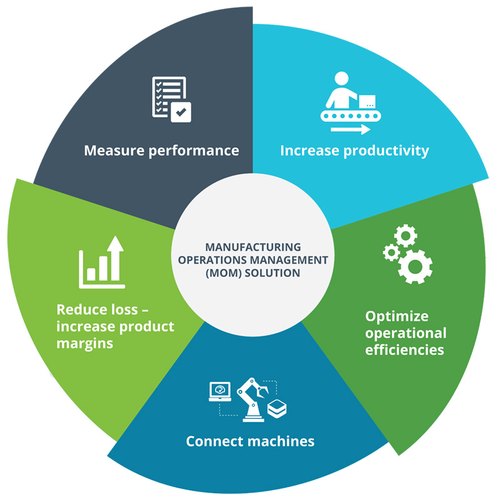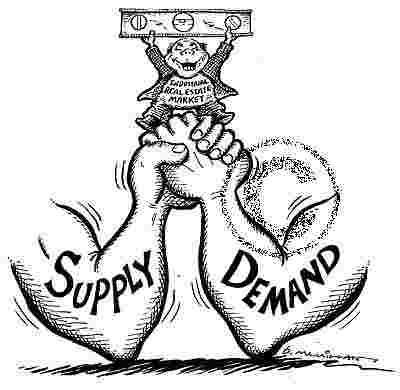How to improve Manufacturing Operations Pipeline of your business?

The manufacturing industry has grown leaps and bounds over the years and has developed into a dynamic and versatile field. It has turned into an industry wherein the product quality, productivity, and efficiency no more just reflect on customer satisfaction but make up a huge part of the operational efficiency as well.
The 21st-century manufacturing industry has blossomed into a battleground among global companies, running neck-to-neck with increasing reliance on real-time information. With the rising complications, the markets have constantly been on the lookout for ways to perform manufacturing operations smoothly.
Here are a few ways manufacturing operations can be run effectively and efficiently, but let us understand the meaning of a few basic concepts first, namely:
- Manufacturing Operation Management (MOM)
- Manufacturing Executive Systems (MES)

It is an amalgamation of systems that manage the manufacturing process, with the ultimate goal of increasing efficiency in the production process by delivering quality products at a lower cost. The MOM software comprises several types, which are employed in an organization to achieve the desired output:
- Production management
- Performance analysis
- Quality and regulations
- Human-machine interface
What is Manufacturing Executive Systems (MES)?
The Manufacturing Executive System is also an amalgamation of software systems, it provides information that helps in keeping track of the equipment, production, and operations taking place on the factory floor. It enables real-time operations to take place in the production.
Ultimately, both MES and MOM tools deal with the management and control of manufacturing operations, whose software solutions play a huge role in reducing and preventing hurdles faced in manufacturing operations.
1. Working towards a collective and common goal:
Manufacturing operations are akin to a whole wide sea, and maximum efficiency can take place in the workspace only if every element involved in the process shares a like-minded thought process and is united. By fixing a common goal, it is easier for the employees to strive harder towards achieving it.
There is a necessity because it gives a clear picture of what the organization is working on and reflects on its aspirations. It is also imperative that these goals are reviewed from time to time to make sure that they are achievable and not too overwhelming.
2. Ensuring that real-time production takes place:
Real-time productivity will serve to be beneficial in many ways to improve the efficiency of productivity, and it is one of the main reasons why many companies try incorporating real-time productivity to their best ability. It ensures accuracy in the units produced and the cost spent on it and will give a clear picture of the demand stuck.
It will reduce the expenditure on inventories to a significant level and will allow more focus on the quality of the product and customer satisfaction.
3. Establishing a real-time supply chain:
When a real-time supply chain is established, it is easy for the organizations and the supply chain operators to get their hands on the real-time information. Because the information gets updated as and when it comes, this will help in detecting any fluctuations in the demand or supply in the market.

It allows the operators to make immediate decisions according to their understanding of the market and ensure that the customers’ demands are met.
4. By maintaining optimum production:
Optimum production takes place when the marginal revenue earned from the previous production equals the marginal cost of that production. To ensure optimum production, production planning takes place to reach a well-calculated decision on the required labor force, raw materials, and other assets required to fulfill the production task.
One of the most efficient ways to achieve this step is by employing tools like Overall Equipment Effectiveness (OEE), which is popularly used for measuring the manufacturing operation by making comparative analysis and will help in optimizing production in the best way possible!
5. Scaling the Business:
A well-established company, which has the financial asset and experience, can scale the business and benefit from it tremendously. Investments will have to take place on a large scale on machines, and equipment, which will have to be upgraded with no compromise on the quality. A considerable investment also has to be done on human resources as they play a huge role in getting work done effectively and efficiently.
6. Performance analysis:
Wherein an in-depth observation is done on manufacturing operations to develop a better understanding, which will in turn help in a better decision making process. The organization must be committed to a bigger goal, and performance analysis at every interval will only determine how close or far they are from achieving it.

Performance Analysis will give ways to cut down on expenditure, proper utilization of the labor force and will also help in preventing any mishaps from happening at the operational floor level. It will fuel productivity and efficiency once the organization gets a clear view of where they are standing.
7. bringing into play predictive maintenance techniques:
Predictive Maintenance Techniques were particularly curated to determine when exactly the maintenance process should be performed. It acts as a supervisor that overlooks the maintenance function and determines any imminent problems before they occur.
Several of the manufacturing operations are completely vested in predictive maintenance, as it is one of the best ways to rescue oneself from huge expenditures! The reason being that the cost which will be spent upon repairing that equipment will be far greater than the cost spent on its preventive techniques.
8. Quality & Compliance:
Quality and compliance are both key elements involved in the production process, but they are not interchangeable terms. Differentiating the two is important as quality is often defined as goods and services providing intended output, and on the other hand, compliance is regulated and is defined as meeting what is required of it.
They set the standard of production for the company, and they are of paramount importance when it comes to consumers, as the product is evaluated on that basis. By delivering high-quality products and which comply with the regulations, the customers’ trust can be achieved.
Conclusion:
With constant evolution and tight competition, a need for advanced performance analysis tools has arisen. These tools make use of the data available in the decision making process, to act as a guide by helping in choosing the correct course of action.
